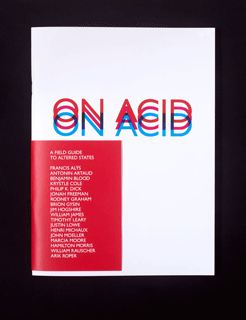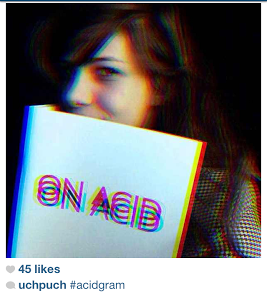
Written by Mircea Eliade, the entry for Shamanism in vol. 19 of Man, Myth and Magic bears this image and the following caption:

“A Lapp shaman with his drum and lying on the ground in trance: it is in ecstatic trance that the shaman makes his journeys to heaven and hell; he is the man who can die and return to life again, many times.” Each time the shaman makes this journey he is treading a path first broken during his psychic initiatory crisis. Eliade argues that the process of initiation occurs as a healing process to resolve a moment of madness in the individual resulting from the initial experience of being divinely called for his shamanic vocation.
The initiation is understood as a process of death and rebirth: “first, torture at the hands of demons or spirits, who play the role of masters of initiation; second, ritual death, experienced by the patient as a descent to hill or an ascent to heaven; third, resurrection to a new mode of being – the mode of ‘consecrated man,’ that is, a man who can personally communicate with gods, demons and spirits. For initiatory death is always followed by a resurrection; that is, in terms of psychopathological experience, the crisis is resolved and the sickness cured. The shaman’s integration of a new personality is in large part dependent on his being cured.”
The depiction on the right of the shaman in ecstatic trance should be familiar to anyone with a passing familiarity with contemporary drug culture: the prostrate shaman covered by his own drum resembles a passed-out druggie, his senses overwhelmed, the flickering flame of his ego temporarily snuffed. It is a reminder of one of the most recurrent tropes that emerged in psychedelic-spiritual culture of the late sixties and seventies: the process of death and rebirth. Since their incursion into twentieth-century America via the worlds of Harvard psychology, the Millbrook estate and the International Federation of Internal Freedom, the experiential effects of psychedelics have been understood in religious analog.
—————


Timothy Leary - High Priest - Chapter 4
The details of her experience are colored in the hyperbolic tones of eroticized mysticism characteristic of Calfornian New Age philosophy. Moore describes the come-down process, by which the soul finds itself reborn into the material world by saying "at that point it didn’t seem remotely possible that I could ever return to the phenomenal world of things and doings in which I had formerly functioned…As I began to look out of my eyes once more I became aware that Jane was sitting silently beside me. It seemed terribly important that she should be there, and that we should be sharing this sacred interval together. I fancied that we were fellow priestesses in ancient Egypt, that she was my hierophant who would usher me back to the world of the living. Images of colonnaded temples, sphinxes, pyramids and winged figures floated behind her. I loved her enormously and felt that we had been through something like this before in one of the mystery schools of legendary eras. Surely we would remain soul sisters forever. “You are my initiator,” I whispered, certain that she would understand.”
—————
In his 1980 book LSD Psychotherapy, the culmination of more than twenty-years of clinical research in therapeutic practice with psychedelics, Stanislav Grof promoted the notion that the death-rebirth process experienced by the analysand during a clinical LSD session and rendered in the eye of the mind through cosmic imagery was in fact a conduit to perinatal experience – the originary traumatic memories of human birth encoded within the individual. Grof subdivided the perinatal trajectory into four stages or Basic Perinatal Matrices (BPM). According to Grof, the image below reflects the experience of volcanic ecstasy during BPM III, which “is frequently associated with visions of purifying fire (pyrocatharsis). During this stage, while releasing enormous amounts of destructive energy, LSD subjects identify with erupting volcanoes, atomic explosions, thermonuclear reactions, and even cosmic catastrophes.”
—————
The sole tattoo on my body is a Rosicrucian hourglass and scythe inked on the back of my left upper forearm. The image was chosen seven years ago at a time when I was reading Walter Benjamin’s Origin of German Tragic Drama, in a kind of metonymic homage to Benjamin and the theories of Baroque allegory and eschatology he explores in the text. The origin of Rosicrucianism in
—————
Recorded last summer in









No comments:
Post a Comment